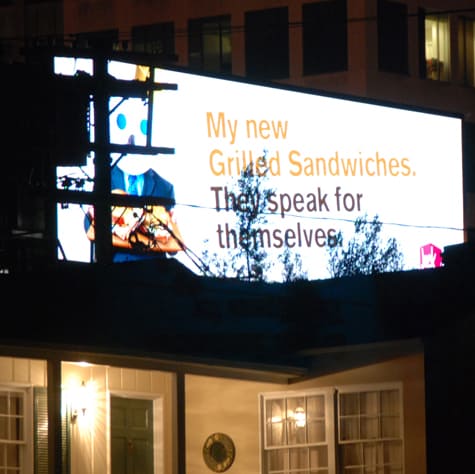 This Thursday, March 5th at 10:40am the Detroit City Council will hold public hearings regarding the proposed amendments to Chapter 4 (Detroit Sign Ordinance) at the Coleman A. Young Municipal Center. Please attend or write Detroit City Council to express concerns about some of the provisions of this ordinance. This ordinance will result in extreme energy waste, light pollution, and visual blight…. all of these issues can be easily resolved and the City can adopt a sign ordinance that supports commercial activity, improves the City’s appearance, and respects local residents.
This Thursday, March 5th at 10:40am the Detroit City Council will hold public hearings regarding the proposed amendments to Chapter 4 (Detroit Sign Ordinance) at the Coleman A. Young Municipal Center. Please attend or write Detroit City Council to express concerns about some of the provisions of this ordinance. This ordinance will result in extreme energy waste, light pollution, and visual blight…. all of these issues can be easily resolved and the City can adopt a sign ordinance that supports commercial activity, improves the City’s appearance, and respects local residents.
We are particularly concerned that:
- Digital billboards will be permitted within 125 feet of a residence. A recent planning analysis in Sterling Heights found the light from one digital billboard could be viewed from 3,600 feet. Does anyone want a digital billboard 125 feet from their living room window or bedroom window? This is an unacceptable provision if Detroit is committed to making neighborhoods more livable for residents. While this is a slight improvement over current spacing, it’s not nearly enough to make a real difference.
- Advertising signs as large as 5,000 square feet will be allowed in the Central Business District. In the Entertainment District these 5,000 square foot signs would be allowed to play video and be digital. Additionally, in the Entertainment District the city is placing no limit on size/number of business signs and they are encouraged to be video/digital. The amount of energy wasted and light pollution this will produce is unthinkable.
Below is Scenic Michigan’s most recent letter to Council. You can read our detailed recommendations in the report we provided to Council. We urge you to speak up
—
Dear Detroit City Council,
We are writing to express our ongoing concern and growing frustration about the proposed amendments to Chapter 4 Advertising and Signs. We were surprised to see a new (worse) draft released on 2/7/2020 AFTER Planning Commission reviewed and approved the ordinance on 1/23/2020. The latest draft adds more oversized signage and allows more ways to skirt the rules intended to protect the visual appearance of the city. We urge Council to:
- Prohibit digital and video advertising signs and substantially restrict the types of signs that may operate as “dynamic” or “animated”.
- Place greater limits on the types and size of signs allowed in the Entertainment District. The current ordinance places no limitations on the size or number of electronic signs and even allows 5,000 square foot advertising signs that play video! This is huge—the size of the average highway billboard is 672 sq ft.
- Thoughtfully reduce the types of business and advertising signage permitted in the City, rather than expand them. For instance, roof signs which are generally being prohibited in other cities, are now allowed in more areas of the city. Waivers should not be allowed for signs included in the prohibited signs section (new as of 2/7/20 draft).
- Reduce the number of oversized wall signs allowed in Central Business District. There is no need for 5,000 square foot signs. In each draft the number is increasing—now 45 super advertising signs are allowed in the CBD! Further, in earlier drafts, renewal was not allowed in order to increase equity so more building owners could share in the revenue. The first draft stated buildings in the CBD could have a wall advertising sign for 5 years, then it became 9 years… now a building owner might have a sign indefinitely. Was equity every important?
As drafted, this ordinance remains in direct conflict with the goals articulated City’s Master Plan policies (see sections on Design & Energy/Environment), Sustainability Action Agenda, Streetscape Program, and many nonprofit initiatives such as Safe Passage Great Lakes. Detroit has been working for decades to DECREASE the number of signs and types of signs across the city. This sign ordinance changes policy direction and seeks to introduces oversized advertising signs, video signs, and new types of business signs. These changes are not aligned with current best practices in urban planning which urge communities to reduce blight and light pollution and capitalize on the features of a city that are unique, thus building a sense of place people want to live, work, and play.
